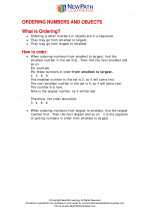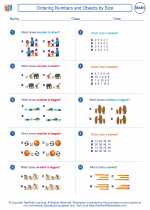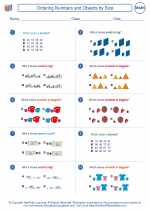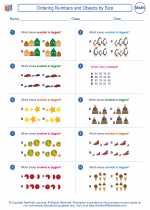Ordering Numbers and Objects by Size -> ascending order
Ascending Order
Ascending order refers to arranging a set of numbers from the smallest to the largest. When numbers are listed in ascending order, each number in the list is greater than or equal to the number that comes before it.
For example, if we have the numbers 5, 2, 7, 1, and 9, arranging them in ascending order would give us 1, 2, 5, 7, 9.
When working with ascending order, it’s important to compare the numbers and place them in the correct order. This concept is often introduced in early math education and is fundamental for understanding number sequences and patterns.
Students can practice arranging numbers in ascending order using various exercises and activities, such as number sorting games and worksheets.
[Ascending Order] Related Worksheets and Study Guides:
.◂Math Worksheets and Study Guides First Grade. Ordering Numbers and Objects by Size

 Worksheet/Answer key
Worksheet/Answer key
 Worksheet/Answer key
Worksheet/Answer key
 Worksheet/Answer key
Worksheet/Answer key
 Worksheet/Answer key
Worksheet/Answer key
 Worksheet/Answer key
Worksheet/Answer key
